Get Distinct Predictive Forecasts per Entities For your Planning Model
Thanks to Smart Predict, you can create distinct predictive forecasts per entities using your planning model as data source, where the granularity of the predictive forecasts is determined by the aggregation level of the combined dimensions. But what does it mean?
| Roles in Smart Predict | Correspondence in your planning model | Correspondence with our example |
|---|---|---|
| Target | Measure that does not involve calculation | It's the measure you want to forecast: <Sales> |
| Date | You can have several dates in a planning model. You select one as main date to consider as the date dimension | <Month> |
| Entity | It corresponds to dimensions or attributes for which you want predictive forecasts. | <Country> dimension and <Product> dimension |
Before the training phase, the data can be represented as follows:
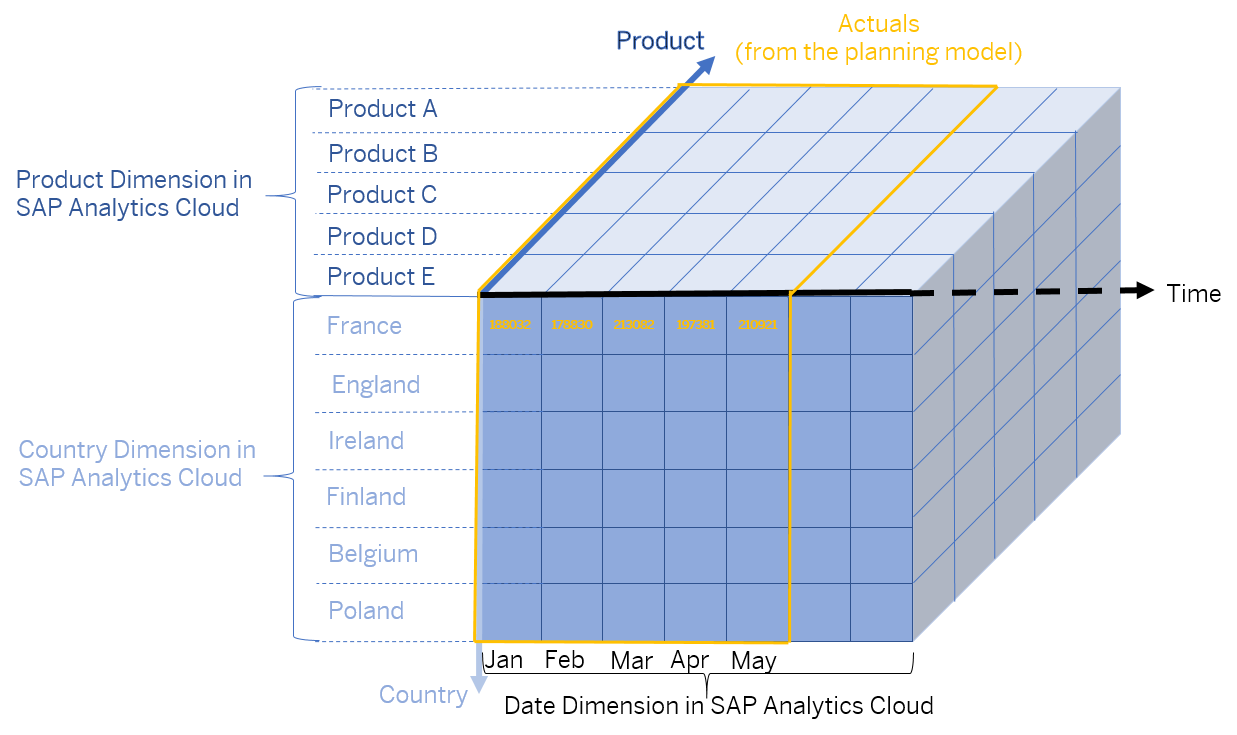
Once the training is done and the generated predictive forecasts are available, the data look like:
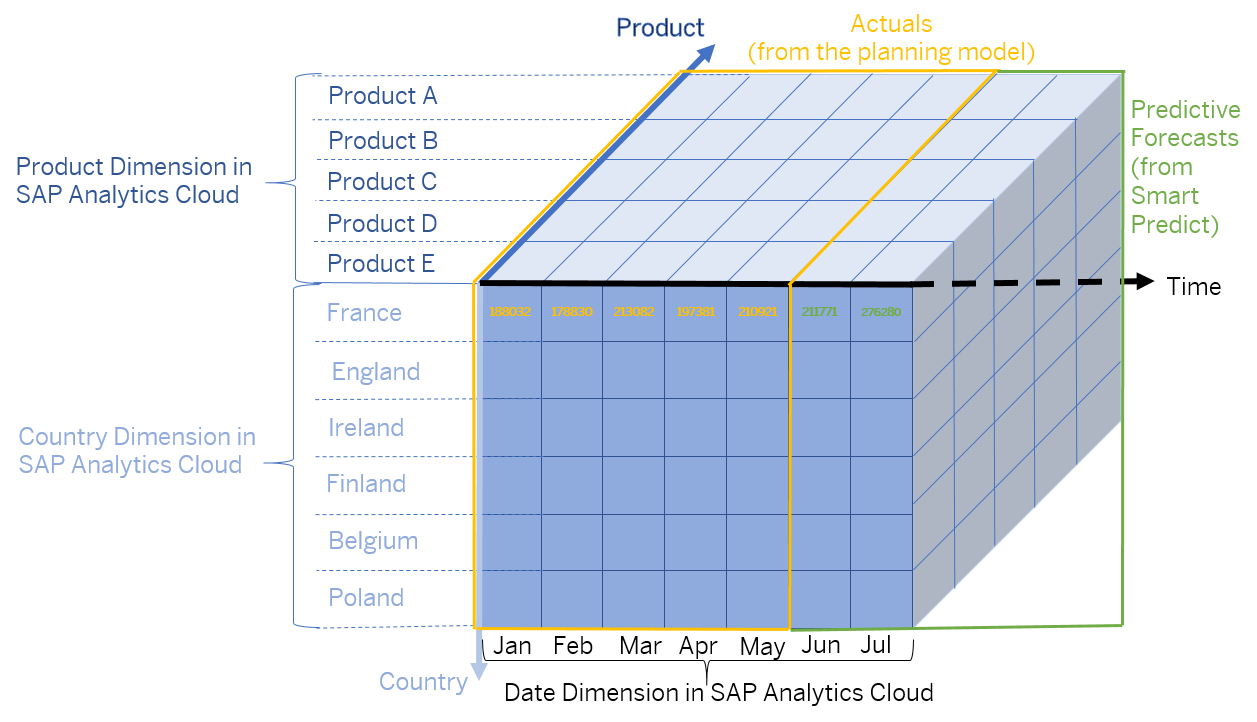
When application is done, the predictive forecasts are added to your planning model. In our example, it means that the generated forecasts for Sales will be added for June and July.
Reporting in SAP Analytics Cloud at a higher level
Even if the time series predictive model is trained and applied based on a lowest level of date granularity, you can still report data at upper level in a story.
Going back to our example: The times series has been generated on months basis. You can report by aggregating the sales by quarters or years (instead of month).
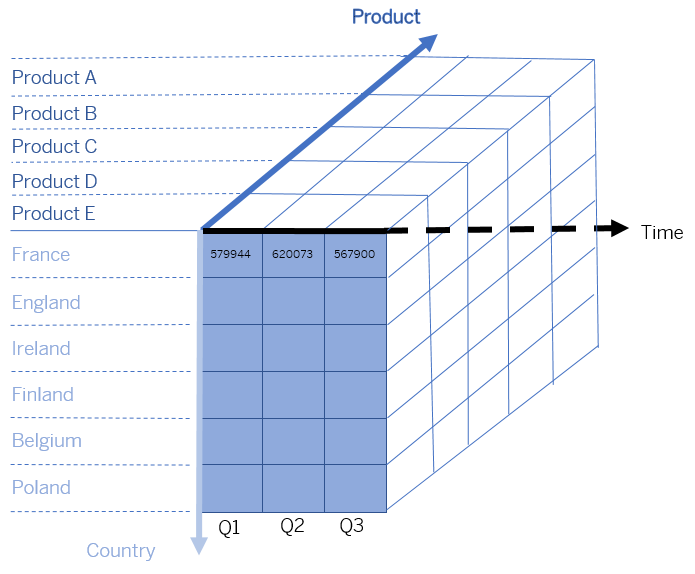
Understanding Which Level of Predictive Forecasts You Need
Entities help you create your predictive forecasts at different levels, depending on your business needs. They can also help you detect performance gaps in your predictive models in some cases.
Entities are subsets of your predictive forecasts that are calculated independently from a combination of one to five dimensions. Each entity can be seen as an individual predictive forecast. These individual predictive forecasts can be agreggated at a higher level if needed.
The level you need for your predictive forecasts depends on the insights you want to get from your predictive forecasts and the data available in your source planning model. You can create entities by combining up to 5 dimensions for varying levels of high-detail predictive forecasts. You can also work without entities to keep your predictive forecasts high-level.
Let’s take a car sales scenario to explore in more detail how entities can help you find the level of predictive forecasts you need. Your company wants insights on future car sales. The company sells five car brands across six countries. You have five months of data available in your source planning model, wand you want two months of predictive forecasts.
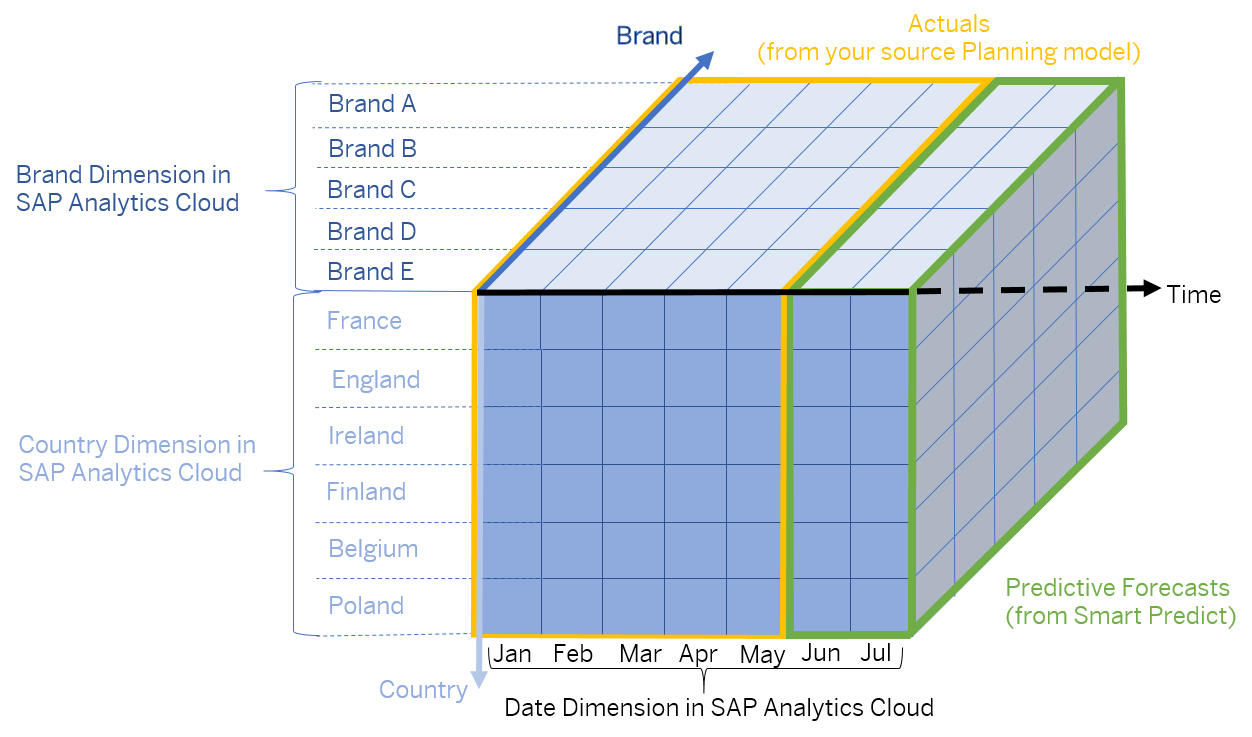
Predictive forecasts using no entities
Predictive forecasts without entities can give you insights on general trends across your data source, such as future car sales across all countries and brands.
In this case, you use car sales as your target and Date as your date dimension and you train your predictive model.
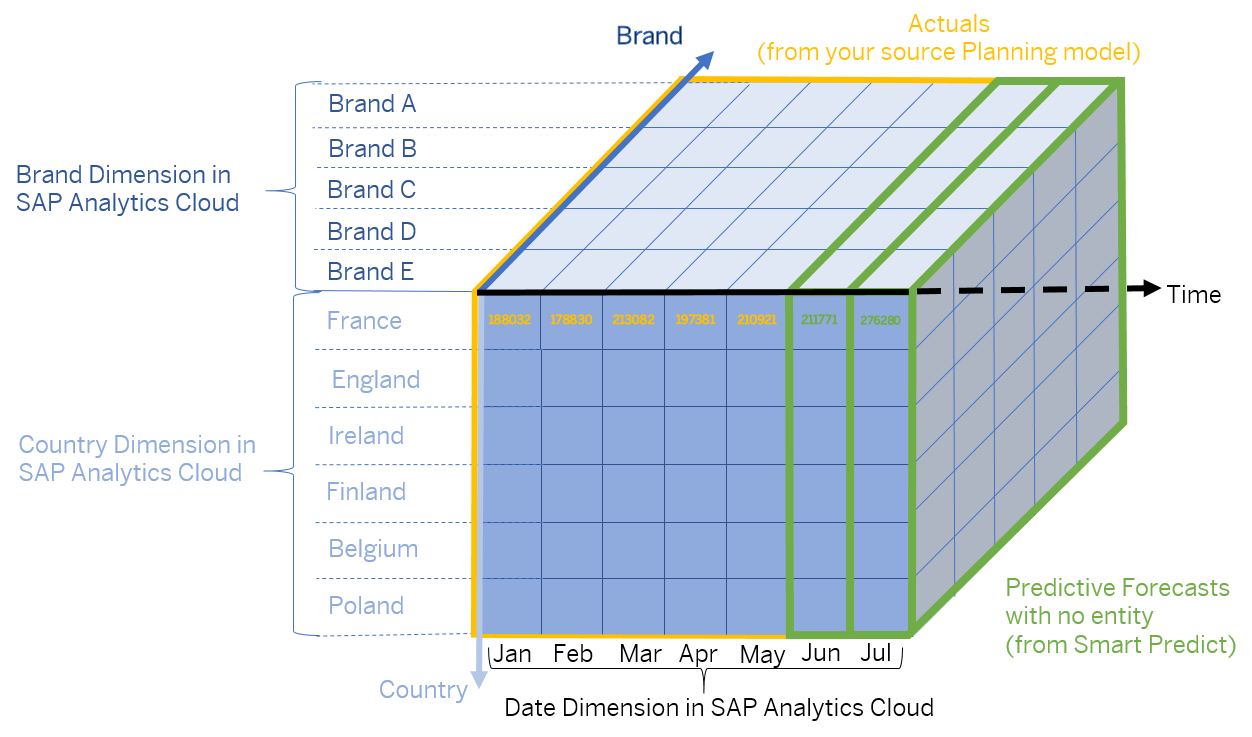
You get a single predictive model that generates two car sales predictive forecasts, one for June and one for July.
This high-level forecasting of the company’s future car sales is useful if you just need an overview without looking into subset-specific trends.
Predictive forecasts using entities with multiple dimensions
Predictive forecasts using entities with multiple dimensions can give you insights on trends within and between several subsets of your data source such as car sales per brand and country.
In this case, you keep car sales as your target and Date as your date dimension. You add Brand and Country dimensions as entities and train your predictive model.
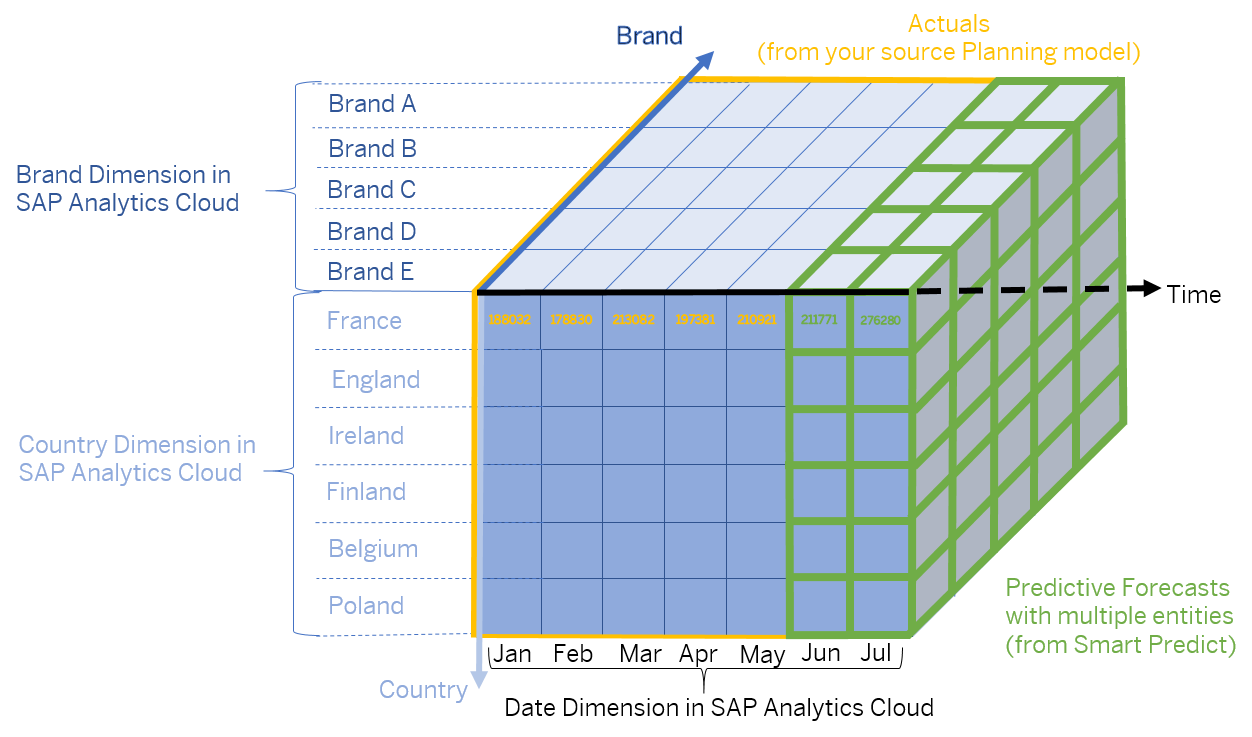
You get thirty predictive models that are calculated independently. The thirty predictive models generate sixty predictive forecasts if all combinations have data available. This high-detail forecasting approach is useful if you need to focus on several subsets such as how one brand performs in a given country or how one country performs by brand compared to other countries. The sixty predictive forecasts can still be aggregated at a higher level by Country, Brand or Date if needed.
Predictive forecasts using entities with one dimension
Predictive forecasts using entities with one dimension can give you insights on trends within one subset of your data source such as car sales per country
In this case, you keep car sales as your target and Date as your date dimension. You add the Country dimension as entity and train your predictive model.
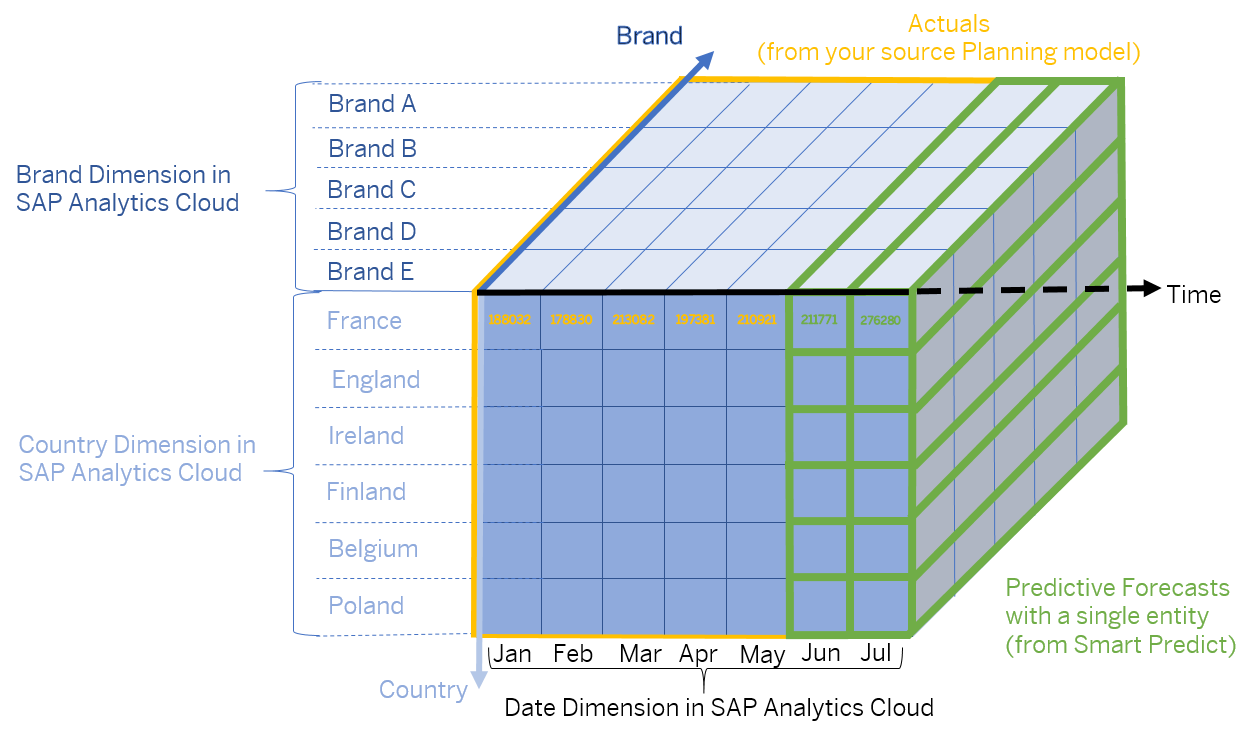
You get six predictive models (one per country) that are calculated independently. Twelve predictive forecasts are generated if all combinations of Country and Date are possible.
These twelve predictive forecasts can also be aggregated at a higher level by Country or Date if needed. This mid-level forecasting approach is useful when you need to focus on trends and relationships in one specific subset such as how each country will perform individually and compared to other countries.
Entities are a useful tool to tailor the level of your predictive forecasts to your different business needs. You may need to try a few forecasting combinations to reach the level of accuracy you want.